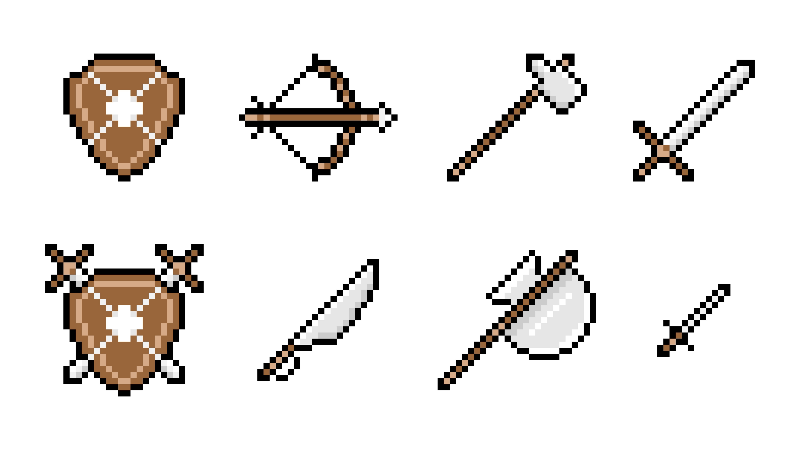Baldur’s Gate 3 Subclasses Guide

Upon entering the world of Faerun, players must be prepared to face the unspeakable horrors and dangers waiting for them. Before starting your adventure, you must select the class you start with. Further on, adventurers must choose a specialization of their chosen path to make them even stronger. This Baldur’s Gate 3 Subclasses guide will let players know what subclasses best fits them.
Table of Contents
What are Baldur’s Gate 3 Subclasses?
Subclasses are secondary advanced jobs that allow characters to specialize in a specific role or niche based on their primary job. These specializations can alter how gameplay and how you approach certain situations. Selecting your subclass will significantly change your kit and tactics, so pick the most appropriate one for your preferred playstyle.
There are several things to consider when choosing your primary job and subclass, but the main factor is your play style. It would help if you questioned yourself whether you prefer melee or ranged, physical attacks or magic, and confrontation or stealth. Determining the desired gameplay is crucial for finding the best subclass for you.
Subclass List
About 12 primary jobs are available in the current version of Baldur’s Gate 3, each with its subclasses. There will be potential new classes in the future with their specializations. In the meantime, these are all the paths that players can choose from:
Barbarian
- Wildheart
- Berserker
- Wild Magic
Bard
- College of Valour
- College of Lore
- College of Sword
Cleric
- Knowledge Domain
- Life Domain
- Light Domain
- Nature Domain
- Tempest Domain
- Trickery Domain
- War Domain
Druid
- Circle of the Land
- Circle of the Moon
- Circle of the Spores
Fighter
- Champion
- Eldritch Knight
- Battle Master Champion
Monk
- Way of the Four Elements
- Way of the Open Hand
- Way of Shadow
Paladin
- Oathbreaker
- Oath of Devotion
- Oath of the Ancients
- Oath of Vengeance
Ranger
- Beast Master
- Hunter
- Gloom Stalker
Rogue
- Assassin
- Arcane Trickster
- Thief
Sorcerer
- Draconic Bloodline
- Wild Magic
- Storm Sorcery
Warlock
- Archfey
- The Fiend
- The Great Old One
Wizard
- Abjuration
- Conjuration
- Divination
- Enchantment
- Evocation
- Necromancy
- Illusion
- Transmutation
Which Baldurs Gate 3 Subclasses to Play
Each subclass has its role or niche in a dungeon-delving party. They can significantly alter how a job is played because some ranged magic-casting characters might turn into front liners. Here is how you figure out which subclasses to try out:
Barbarian Subclasses
- Wildheart – The Wildheart Barbarian focuses on harnessing the power of nature. They gain abilities such as increased movement speed, resistance to elemental damage, and summoning animals as allies. This subclass excels in combat and exploration, making it a versatile choice for players who enjoy various challenges.
- Berserker – The Berserker Barbarian embraces reckless abandon in combat. While in a state of frenzy, they gain increased damage output and pain tolerance. However, there are drawbacks to this intense fighting style, including a loss of control and the inability to cast spells. The Berserker subclass best suits players who prioritize raw damage and are willing to take risks.
- Wild Magic – The Wild Magic Barbarian is known for its unpredictable nature. They can trigger wild surges, which result in random and varied effects. These effects can range from harmless to devastating, requiring players to exercise caution. The Wild Magic subclass offers a fun and unpredictable playstyle for those seeking a challenge and excitement.
Bard Subclasses
- College of Valour – The College of Valour focuses on martial combat, enhancing Bard’s frontline capabilities. This subclass grants abilities such as Bardic Inspiration, empowering allies with bonuses to attack rolls or saving throws. Additionally, Combat Inspiration can temporarily boost ally AC or movement speed. The College of Valour is an excellent choice for players seeking a Bard who excels as a fighter and spellcaster.
- College of Lore – The College of Lore delves deep into the realm of spellcasting. Bards of this subclass gain access to various spells, encompassing offensive and utility options. Cutting Words is a notable ability that enables Lore Bards to impose a disadvantage on enemy attack rolls or saving throws. Players who desire a potent spellcaster capable of supporting their allies will find the College of Lore a fitting choice.
- College of Swords – The College of Swords masterfully combines martial prowess and spellcasting finesse. Bards of this subclass utilize Bardic Inspiration to augment ally attack or damage rolls. Furthermore, the Blade Flourish abilities empower the Bard with additional damage output and temporary benefits. The College of Swords appeals to players seeking a versatile character proficient in combat and spellcasting.
Cleric Subclasses
- Knowledge Domain – The Knowledge Domain focuses on knowledge and learning. Knowledge Domain Clerics possess many spells, including divination and utility options. Their Channel Divinity ability grants allies a bonus to Intelligence, Wisdom, or Charisma checks. This subclass suits players who desire a versatile spellcaster supporting their partners.
- Life Domain – The Life Domain specializes in healing and support. Life Domain Clerics excel in healing spells and can utilize their Channel Divinity to restore allies’ health or deal damage to enemies. Players seeking a dedicated healer will find the Life Domain to be a fitting choice.
- Light Domain – The Light Domain revolves around radiance and protection. Light Domain Clerics harness radiant damage spells and can use Channel Divinity to unleash a burst of light that damages and blinds enemies. This subclass appeals to those who wish to be powerful spellcasters adept at dealing damage and safeguarding their allies.
- Nature Domain – The Nature Domain centers on nature and the natural world. Nature Domain Clerics wield spells related to plants, animals, and the environment. Their Channel Divinity ability grants bonuses to attack rolls or AC or allows them to summon a nature spirit. This subclass suits players desiring a versatile spellcaster attuned to the natural realm.
- Tempest Domain – The Tempest Domain focuses on storms and lightning. Tempest Domain Clerics command lightning and thunder damage spells, and their Channel Divinity summons a damaging storm that knocks enemies prone. Players seeking a potent spellcaster capable of dealing damage and controlling the battlefield will find the Tempest Domain appealing.
- Trickery Domain – The Trickery Domain revolves around deception and trickery. Trickery Domain Clerics possess illusion and enchantment spells, and their Channel Divinity allows them to create duplicates or turn invisible. This subclass suits players who prefer a versatile spellcaster adept at deceiving and manipulating enemies.
- War Domain – The War Domain specializes in combat and martial prowess. War Domain Clerics wield a wide range of combat spells and can use Channel Divinity to grant bonuses to attack rolls or AC or deal damage to enemies. This subclass appeals to those who desire a frontline fighter with spellcasting abilities.
Druid Subclasses
- Circle of the Land – The Circle of the Land emphasizes the connection between nature and the land. Circle of the Land Druids wield a wide array of thematic spells related to the land they are attuned to. They can create food and water, speak with animals, and traverse the wind. Additionally, they can Wild Shape into various land animals, enhancing their versatility and interaction with the natural world.
- Circle of the Moon – The Circle of the Moon focuses on the transformative power of animals. Circle of the Moon Druids excel at shapeshifting into a vast range of animals, including land animals and beasts. Furthermore, they gain the ability to assume the forms of larger and more formidable creatures, such as giant bears and dire wolves. This subclass suits players who desire to be powerful shapeshifters capable of engaging in close combat.
- Circle of the Spores – The Circle of the Spores harnesses the potency of fungi and decay. Circle of the Spores Druids possess spells that inflict necrotic damage, and their Wild Shape ability allows them to transform into fungal creatures. These Druids excel as formidable spellcasters, dealing damage and controlling the battlefield.
- Fighters Subclasses
- Champion – The Champion subclass focuses on raw physical power, enhancing the Fighter’s combat prowess. Champions gain increased Strength, Constitution, and an expanded critical hit range. This subclass is an excellent choice for players seeking to maximize their damage output in close combat.
- Eldritch Knight – The Eldritch Knight combines martial combat with spellcasting abilities. While Eldritch Knights have access to a limited selection of spells, they compensate with their Action Surge ability, enabling them to take additional action on their turn. This subclass suits players who desire a versatile character proficient in martial combat and spellcasting.
- Battle Master – The Battle Master subclass emphasizes tactical mastery and control on the battlefield. Battle Masters possess an array of maneuvers, allowing them to grant allies bonuses, hinder foes with disadvantages, or even knock enemies prone. Players who prefer a strategic fighter capable of influencing the flow of battle will find the Battle Master subclass appealing.
Monk Subclasses
- Way of the Four Elements – The Way of the Four Elements subclass focuses on harnessing the power of the four elements. Monks following this path can utilize their Ki to cast elemental spells, manipulating fire, wind, water, and more. They can also create primary effects like fire walls or fog clouds. This subclass suits players seeking a versatile spellcasting monk who can engage in combat and spellcasting.
- Way of the Open Hand – The Way of the Open Hand subclass emphasizes unarmed combat and stunning techniques. Monks of this path can utilize their Ki to perform devastating unarmed strikes, employing open-hand strikes, quivering palms, and shatter strikes. They can also stun enemies, rendering them vulnerable to further attacks. This subclass is ideal for players who desire a potent striker capable of controlling the battlefield.
- Way of Shadow – The Way of Shadow subclass revolves around stealth and deception. Monks following this path can employ their Ki to move silently, blend into shadows, and create illusions. They can also utilize their Ki to teleport short distances, enhancing their elusiveness and making them challenging to track. Players seeking a stealthy character proficient in infiltration and assassination will find the Way of Shadow appealing.
Paladin Subclasses
- Oathbreaker – The Oathbreaker subclass features Paladins who have strayed from their righteous path, embracing darkness and evil. Oathbreakers possess formidable power, capable of dealing significant damage. However, they are more susceptible to attacks from good-aligned creatures. This subclass is ideal for players seeking a damage-focused Paladin that excels in dealing with necrotic damage.
- Oath of Devotion – The Oath of Devotion subclass embodies Paladins dedicated to protecting the innocent and upholding justice. These Paladins are versatile, adept at both combat and spellcasting. They exhibit unwavering morality and a willingness to make personal sacrifices for the greater good. The Oath of Devotion subclass focuses on dealing with radiant damage and safeguarding allies.
- Oath of the Ancients – The Oath of the Ancients subclass binds Paladins to protect nature and the natural world. These Paladins are formidable, capable of dealing substantial damage to fiends and undead. They possess resilience and the ability to heal themselves. The Oath of the Ancients subclass leans toward a more defensive playstyle, prioritizing damage against fiends and undead.
- Oath of Vengeance – The Oath of Vengeance subclass compels Paladins to hunt down and punish those who wronged them. These Paladins are relentless and unforgiving, driven by a strong desire for justice. They possess the power to deal significant damage and exhibit a more striker-focused combat style. The Oath of Vengeance subclass specializes in tracking and punishing enemies.
Ranger Subclasses
- Beast Master – The Beast Master subclass allows Rangers to bond closely with a loyal animal companion. Rangers with this subclass fight alongside their animal companion, utilizing their unique abilities and strengths. The animal companion can assist in combat, scouting, and carrying supplies, making the Beast Master a versatile choice for players seeking a symbiotic relationship with their animal companion.
- Hunter – The Hunter subclass emphasizes dealing with damage and controlling the battlefield. Hunters can unleash devastating attacks on enemies, such as whirlwind attacks, hurricanes, and swift quivers. Additionally, they have tactical skills to manipulate the battlefield, including hiding in plain sight and vanishing. The Hunter subclass excels in both dealing damage and strategically controlling engagements.
- Gloom Stalker – The Gloom Stalker subclass excels in fighting within dark and shadowy environments. Gloom Stalkers possess abilities that enhance their combat effectiveness in darkness, such as stalker’s fury and umbral sight. They also have skills to navigate stealthily, including hiding in darkness and moving without leaving a trace. The Gloom Stalker subclass is well-suited for players seeking a formidable striker who excels in dark and shadowy environments.
Rogue Subclasses
- Assassin – The Assassin subclass specializes in dealing devastating damage to unsuspecting enemies. Assassins possess abilities that capitalize on surprising or catching enemies off-guard, enabling them to unleash powerful sneak attacks. They also excel at controlling the battlefield, utilizing skills like hiding in plain sight and vanishing. The Assassin subclass is ideal for players seeking to eliminate foes and swiftly dominate combat engagements.
- Arcane Trickster – The Arcane Trickster subclass combines rogue abilities with spellcasting prowess. Arcane Tricksters can harness spells to inflict damage, manipulate the battlefield, or support their allies. They also possess unique skills that facilitate stealthy maneuvers and evasion. The Arcane Trickster subclass is well-suited for players desiring versatility, as they can seamlessly blend rogue skills with the power of spells.
- Thief – The Thief subclass specializes in utility and finesse, excelling in various skill checks. Thieves can pick locks, disarm traps, and even rob enemies. They also excel in swift and efficient movement across the battlefield. The Thief subclass is an excellent choice for players who value versatility, as they can easily navigate and solve puzzles, making them influential explorers and problem solvers.
Sorcerer Subclasses
- Draconic Bloodline – The Draconic Bloodline subclass emphasizes the power of dragons. Sorcerers with this subclass gain abilities based on lineages, such as draconic breath and elemental affinity. They also possess defensive skills, including draconic resilience and scales of protection. The Draconic Bloodline is an excellent choice for players who seek to wield formidable spells while maintaining a potent combat presence.
- Wild Magic – The Wild Magic subclass taps into magic’s erratic and unpredictable nature. Sorcerers with this subclass possess abilities that manifest spells in unexpected ways, such as wild magic surges and tides of chaos. They also wield powers that allow them to shape the battlefield, such as chaos bolts and wrathful rebukes. The Wild Magic subclass is ideal for players who desire a spellcaster with a touch of chaos, unpredictability, and raw power.
- Storm Sorcery – The Storm Sorcery subclass harnesses the might of storms and weather manipulation. Sorcerers with this subclass can control winds, summon lightning, and evoke thunderous waves. They also possess swift and efficient movement abilities on the battlefield, like lightning bolts and roaring waves. The Storm Sorcery subclass suits players seeking a spellcaster who can command the elements and swiftly navigate combat scenarios.
Warlock Subclasses
- Archfey – The Archfey subclass centers around the mystical power of the feywild. Warlocks with the Archfey subclass gain abilities based on their pact with a fey entity. This includes fey presence to charm and frighten foes and misty escape to maneuver the battlefield quickly. They also possess abilities like beguiling presence and phantasmal killer, allowing them to control and manipulate enemies. The Archfey subclass suits players who desire to be charismatic spellcasters with captivating fey-inspired abilities.
- The Fiend – The Fiend subclass taps into the dark power of the lower planes. Warlocks with the Fiend subclass gain abilities based on their pact with a demonic entity. They wield powers such as darkness to obscure vision and hellish rebuke to retaliate against attackers. Abilities like firebolt and severe blast grant them devastating damage-dealing potential. The Fiend subclass suits players who seek to unleash fiery destruction upon their enemies and excel at dealing significant damage.
- The Great Old One – The Great Old One subclass delves into the enigmatic forces of the outer planes. Warlocks with the Great Old One subclass gain abilities based on their pact with an ancient and alien being. They possess powers like entropic wards to protect themselves and phantasmal force to manipulate illusions. Their capabilities, such as awakened minds and dreams, allow them to communicate and control the minds of others. The Great Old One subclass is ideal for players who desire a spellcaster with otherworldly abilities capable of bewildering foes.
Wizard Subclasses
- Abjuration – The Abjuration subclass emphasizes protection and defense. Abjuration Wizards possess abilities like shields and absorb elements, which shield themselves and allies from harm. They can also disrupt enemy spells using skills such as dispel magic and counterspell. Abjuration Wizards excel at both offense and defense, making them ideal for players seeking a spellcaster who can protect themselves and their companions.
- Conjuration – The Conjuration subclass specializes in summoning creatures and objects. Conjuration Wizards possess abilities like summoning lesser demons and walls of stone, allowing them to summon creatures and create barriers. They can also control summoned creatures through powers like dominate monsters and planar binding. Conjuration Wizards are skilled at battlefield control and calling reinforcements, making them suitable for players who enjoy commanding the field with their summoned allies.
- Divination – The Divination subclass grants the power to glimpse into the future. Divination Wizards possess clairvoyance and prophecy, providing insight into future events. They can manipulate outcomes with capabilities such as fateful ally and true seeing. Divination Wizards excel at foresight and controlling destiny, making them an excellent choice for players who desire a spellcaster who can influence events and gain valuable knowledge.
- Enchantment – The Enchantment subclass focuses on manipulating and controlling the minds of others. Enchantment Wizards possess abilities like charm person and a dominant person, allowing them to charm and control individuals. They can also create illusions to deceive and manipulate with abilities like phantasms and mass suggestion. Enchantment Wizards are skilled at mind control and delusion, making them a compelling choice for players who seek to master manipulating others.
- Evocation – The Evocation subclass excels at dealing devastating damage. Evocation Wizards possess abilities like fireballs and lightning bolts, unleashing destructive forces upon their enemies. They can control the battlefield with commands such as a wall of fire and a cone of cold. Evocation Wizards are adept at inflicting widespread damage and exerting control, making them a formidable choice for players who enjoy unleashing powerful offensive spells.
- Necromancy – The Necromancy subclass delves into the manipulation of death and the undead. Necromancy Wizards possess abilities like animating dead and creating undead, enabling them to raise and control the undead. They can drain life from enemies using abilities like chill touch and finger of death. Necromancy Wizards excel at managing the forces of death, making them an intriguing choice for players who wish to command hordes of undead and harness necrotic powers.
- Illusion – The Illusion subclass focuses on the creation of illusions. Illusion Wizards possess abilities like silent and significant images, conjuring realistic fantasies. They can manipulate minds with abilities like phantasms and mass suggestion. Illusion Wizards excel at deceiving and controlling perception, making them a captivating choice for players who enjoy trickery and mind games.
- Transmutation – The Transmutation subclass centers around altering the physical properties of objects and creatures. Transmutation Wizards possess abilities like enlarge/reduce and polymorph, allowing them to change sizes and forms. They can also heal and restore others using powers like cure wounds and more excellent restoration. Transmutation Wizards are skilled at altering the battlefield and providing support, making them a versatile choice for players who desire a spellcaster to shape reality and aid their allies.
Tips for Choosing Your Baldur’s Gate 3 Subclass
Consider your playstyle and party composition
- Determine the type of character you want to play, such as a powerful damage dealer, a versatile support character, or a tanky front-liner. Think about your preferred role in combat and exploration. If playing with a group, consider how your chosen subclass will complement the abilities of other party members. Balance the roles and strengths within the party to ensure a well-rounded team.
Read and understand the subclass descriptions
- Take the time to read the descriptions of each subclass carefully. Consider the unique abilities and features offered by each subclass. Pay attention to the playstyle and flavor associated with each subclass. Look for subclasses that align with your desired playstyle and resonate with your character concept.
Experiment and adapt as you progress
- You can experiment with different subclasses once you’ve started playing the game. If you’re not enjoying your current subclass, you can always respect your character and choose a different one. Embrace the opportunity to try out new subclasses and find the one that suits your preferences and enhances your gameplay experience.














